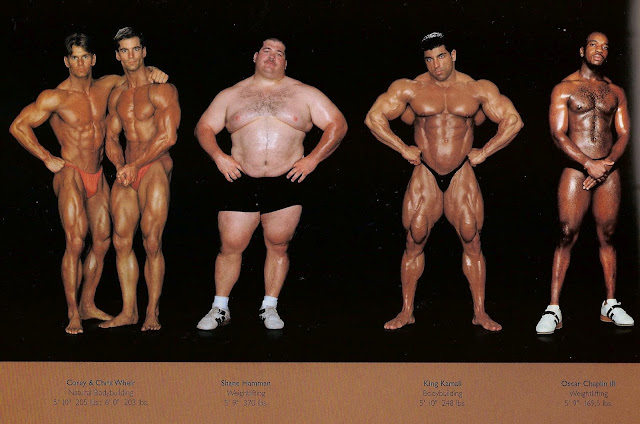Arnold Newman: The Environment Is The Portrait
Right around the same time that photographer Yousuf Karsh was working on his incredibly evocative and minimalist portrait style, another portraitist was taking a different approach. While Karsh relied solely on the subject to bring out the portrait within, fellow portrait photographer Arnold Newman believed that the opposite was true. For Newman, placing equal emphasis on the subject's environment was just as important to producing a great portrait.
The story of Arnold Newman's early life draws some similarities with many famous pioneering photographers of the 20th century; he grew up wanting to be a an artist, but due to the financial constraints, he had to put aside his artistic ambitions and instead had to work at a photographer's studio for the time being. During these early years, he learned the technicalities of the photographic medium, but more importantly, he learned how to interact with the people in front of his camera lens, something that would be of great benefit in his later years.
Even after he established his own studio, he didn't forget his early education in the arts, especially his exposure to the Metropolitan Museum of Art and the Museum of Modern Art; the modernism movement he encountered would have a heavy influence in his photographic style.
By the middle of the last century, Newman's portraits were on the covers of some of the most famous magazines. He became known as one of the pioneers of Environmental Portraiture (although he himself did not like the term). In portraits such as these, the subjects surroundings, be it their home or workplace, must be able to convey a sense of what the subject is like. Thus, even without knowing who the subject is, a reader can identify the artist in his studio, or a musician at the keyboard, or a president at his desk.
Newman insisted that a picture of a celebrity or politician by himself wouldn't be as meaningful as one taken in the subject's workplace. Moreover, anything caught in the frame should be able to communicate to the viewer something revealing about the subject. As he put it, "The surroundings had to add to the composition and the understanding of the person. No matter who the subject was, it had to be an interesting photograph."
Even with other photographers copying his environmental portraiture style, Newman set himself apart from everyone else through his work process. Even though these were carefully planned portraits, they come off with a candid and in-the-moment quality akin to Henri Cartier-Bresson's street photography. The viewer of course knows a split second later that it is indeed a planned portrait because of the carefully composed environment and the deftly posed sitter.
Indeed, these pictures are more than just environmental portraits, but rather impressionistic of what the subject is, was or could be. It didn't matter whether it was the president or an artist or a worker, Newman treated them equally and the results show in his photographs.
Newman continued to work well into his later years. Despite his portfolio giants including President John F. Kennedy, Pablo Picasso, Marilyn Monroe and many others, Newman continued his passion for photography. His last days saw him teaching, planning books and arranging and planning trips for himself and his wife. He passed away in 2006.
More of Arnold Newman's environmental portraits as well as his earlier abstract photographs can be found at the Arnold Newman Archive. Some of the books written about and by Newman include Arnold Newman, another book entitled Arnold Newman and Arnold Newman: Five Decades.












i dont necessarily agree that the surrounding is enough to define a person but it does bring out the main characteristics. loved the woody allen photo!
ReplyDeleteThey're not bad, not keen on some of the subject matter.
ReplyDeleteThose photos definitely got some amazing angles!
ReplyDeleteI love wide angle photography. The lines in the one of JFK are amazing.
ReplyDeleteThis is what I'd call a close-to-perfect mix of portrait and scene. It has something in it for everyone.
ReplyDeleteWhile Karsh's portraits are simple, yet expressive, I find Newnman's work to be much deeper. The environment is somehow creating a bond between watcher (critic) and subjects - sort of telling their story.
ReplyDeleteI like how he makes it work, it's really interesting. The only one I didn't like was Clinton, I thought it was too cluttered and busy, that's when I realized that that was the point! Felt so silly.
ReplyDeleteSo many awesome photographs!!
ReplyDeleteNice blog. :D
If I wanted an iconic photo to be taken of me I would call Newman back from the dead to take it.
ReplyDeletevery nice :P
ReplyDeletei like your blog ;)
I love pictures like this in where the environment is a portrait. People are always more interesting around interesting things.
ReplyDeleteThe surroundings are like people themselves. That makes me feel like some wet-behind-the-ears art student.
ReplyDeleteGood ol' William Jefferson Clinton....like a boss!
ReplyDeleteI really like his style.
ReplyDeletenice :P
ReplyDeleteI like his style and he's also a great inspiration! :D
ReplyDeleteI particularly enjoyed: Leonard Bernstein, and also the industrial one.
ReplyDeleteI suppose you don't have to be famous to imagine yourself being photographed in your surroundings... What would I be characterized by? What would be behind me in my photos? It makes me wonder... (Not that I'm famous and need to be)
even tho the first two made me laugh, those are great pictures!
ReplyDelete